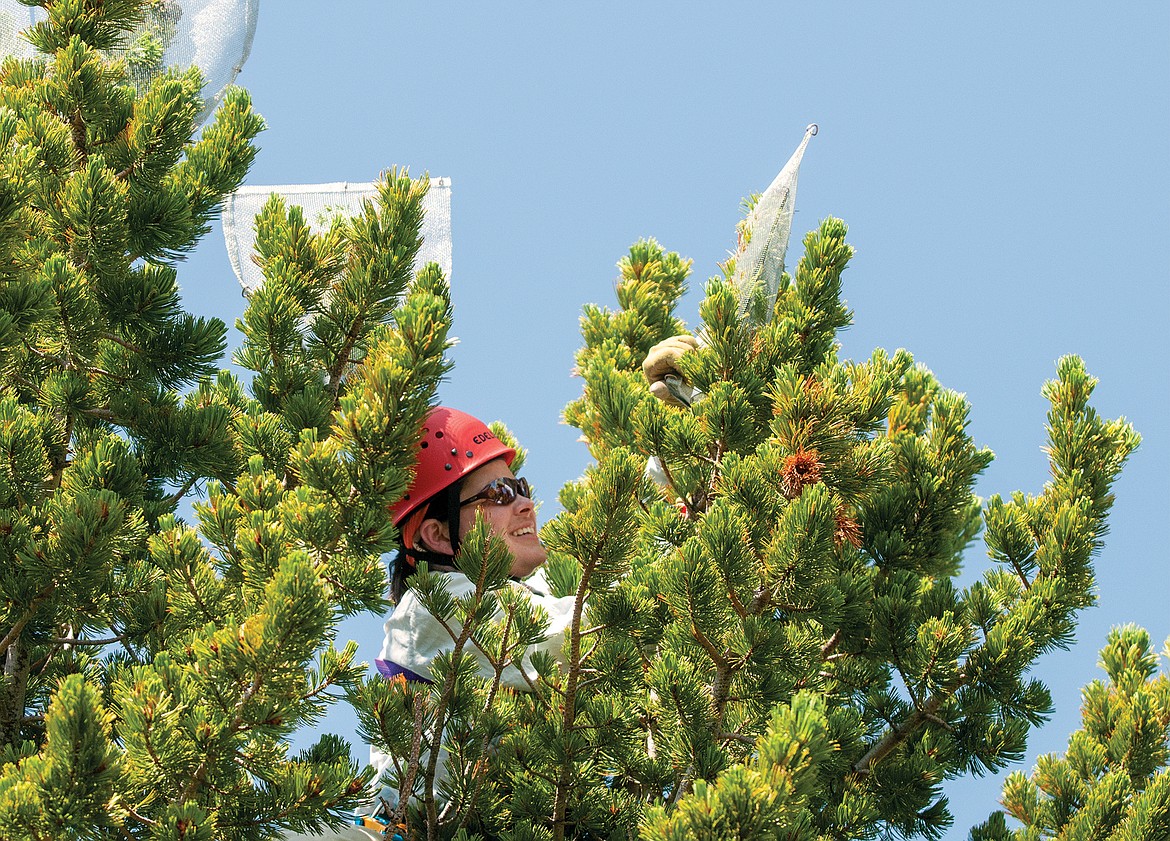Glacier at forefront of whitebark pine conservation efforts
The U.S. Fish and Wildlife Service last month proposed listing the whitebark pine as threatened under the Endangered Species Act.
For the last 24 years, Glacier National Park has been quietly working to conserve the species over its 1 million acres of wildlands.
It is no small task.
The Park first began collecting cones from “plus” trees in 1997. Plus trees are adult, cone-bearing trees that have shown resistance to blister rust, noted Park vegetation biologist Dawn LaFleur.
The rust is a fungal infection introduced from eastern white pine nursery stock from Europe in a shipment into Vancouver, British Columbia in 1910.
Over the past 110 years it has decimated five-needle pine species across the western U.S., including whitebark pine.
In addition to blister rust, the trees have been impacted by mountain pine beetle, high intensity wildfire and climate change; though in Glacier, rust has proven to be the primary culprit, infecting more than 70 percent of Glacier’s whitebark pine.
But the surviving trees have shown a resistance to the rust. Once their seeds are collected, they are propagated in a Forest Service nursery, then eventually shipped back to Glacier to be planted.
The first trees were planted on Grinnell Point in the Many Glacier Valley in 2000 in a small area that had been burned by a previous wildfire.
Today, Park biologists and technicians plant about 500 rust resistant seedlings annually. The survivability rate is about 59 percent over 24 sites, LaFleur noted. That’s better than the average in the west, which is 30 to 40 percent. So far they’ve planted more than 25,000 trees.
But the average hiker wouldn’t think much of the trees if they came across one. Whitebark pine grow achingly slow and trees that were planted 20 years ago today are about hip high.
It will be about 30 more years until they’re able to reproduce and shed cones of their own.
“We’ll be gone,” LaFleur noted, or at least in our twilight years.
There’s other threats outside of rust, including mountain pine beetles and the aforementioned fire. While fire helps stem competition from other species, whitebark don’t survive high intensity blazes.
In the natural world, the trees would be planted by birds and squirrels. Primarily the Clerk’s nutcracker, which buries the seeds in caches to eat later. But the birds don’t always get back to the cache, so the seeds germinate into new trees.
Without the birds, there is little, if any natural distribution. The Park is currently further researching its Clark’s nutcracker population. A member of the jay family, it was once common in Glacier, today, not so much.
Collecting the seeds and planting the seedlings by humans takes a lot of work. Crews carry ladders and climbing gear into the hills, often off-trail to get to the plus trees. The cones are then hand-picked and packed out in backpacks.
Whitebark pine fare well in high alpine environments above 6,500 feet where the weather is harsh and can turn on a dime. About a dozen people total work on the restoration effort annually as part of their jobs restoring vegetation across the Park.
Crews target specific places to plant trees.
“We try to target recent fire scars,” LaFleur said.
Fire scars are important on several fronts. For one, the fire-burned area provides some fresh nutrients in the soils. Downed trees provide cover and the fire scours away competing species.
They try to plant in the spring when the snows have melted and there’s still moisture in the soil or later September, after a good fall rain.
The windows for planting are short, LaFleur said. In more recent years, spring often leaps right into a hot, waterless summer. Whitebark pine thrive in harsh conditions, but they do need moisture to get a start on life.
Some seedlings have even been know to shrink in size in their first few years.
All told, the Park has 127 plus trees it monitors and collects cones from. Just like the seedlings, many are not easy to get to and most are long hikes.
Despite the physical effort, it’s rewarding work.
“It’s pretty special,” LaFleur said. Pretty important.”








